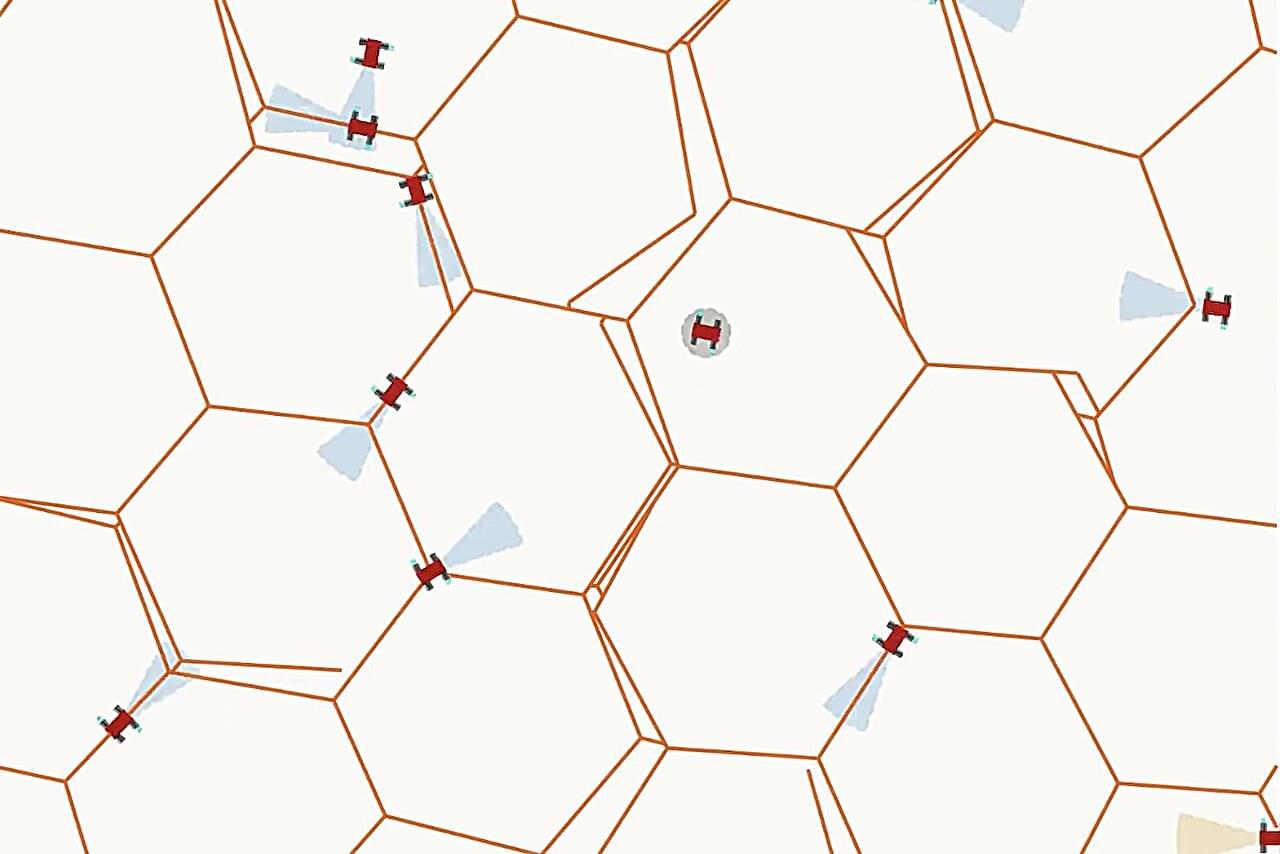Researchers at Florida State University have created new polymer blends that could make batteries safer and longer-lasting.
Category: drones – Page 4
The Dawn of Tesla’s Robotaxi Network & Automated Transportation
Tesla’s launch of a robo-taxi network marks the beginning of a significant transportation disruption that will transform mobility, economy, geopolitics, and urban landscapes with the widespread adoption of electric autonomous vehicles ## ## Questions to inspire discussion.
Transportation Revolution.
🚗 Q: How will Tesla’s Robotaxi network impact transportation? A: Tesla’s Robotaxi network in Austin, Texas marks the ignition point for transportation disruption, with multiple companies competing to provide taxi rides without human drivers, potentially capturing 80–90% market share in 10–15 years.
🛢️ Q: What industries will be disrupted by autonomous electric vehicles? A: Autonomous electric vehicles will disrupt the oil and agriculture industries, as vehicles are the number one users of crude oil, and corn is the top agricultural product in the US, used to produce ethanol for gasoline.
🌆 Q: How will urban planning change with the rise of autonomous vehicles? A: Cities will repurpose parking spaces for retail, living areas, and solar panels, transforming urban planning and enabling new forms of transportation, including drones and aircraft.
Environmental Impact.
Japan builds glove that steers drones remotely with hand gestures
Tokyo researchers create 6-DoF hand-control system using gestures and motion tracking for precise drone operation in complex spaces.

Zelensky: Ukraine agrees deals for ‘hundreds of thousands’ of drones
Ukraine has concluded deals with European partners and a US defence company to step up the production of drones, President Volodymyr Zelensky said on Saturday. Zelensky said Kiev has “reached an agreement with one of the leading American companies to significantly increase our joint efforts” on drones, which have become central to Ukrainian defence efforts against Russia since Moscow’s full-scale invasion in 2022.

Drones capture devastating coral loss as bleaching wipes out most reef life
New research has revealed alarming coral mortality rates of 92% after last year’s bleaching event at Lizard Island on Queensland’s Great Barrier Reef, marking one of the highest coral mortality rates ever documented globally.
The study Coral bleaching and mass mortality at Lizard Island revealed by drone imagery’ has been published in Coral Reefs.
The team assessed the impact of the Fourth Global Coral Bleaching Event, declared by the National Oceanic and Atmospheric Administration (NOAA) in April 2024, which caused extensive bleaching and mortality across the reef system.
China’s new 2.47kW portable laser works in Arctic cold, Saharan desert
Chinese scientists have developed a portable 2-kilowatt (kW) fiber laser weapon that can operate in extreme temperatures. Reportedly capable of functioning in conditions between −58°F (−50°C) and 122°F (50°C), the new laser does not require cooling or heating systems. This breakthrough means the laser can be used anywhere on Earth, from the Arctic to the Sahara, without the need for bulky infrastructure.
If true, the innovation is an impressive feat as most lasers of this power class require massive cooling units (like air conditioners in a shipping container) to avoid overheating or freezing. The device has been developed to cater to defense and industrial sectors.
“We have achieved a technological breakthrough in the performance of wide-temperature operating fibre lasers,” Chen Jinbao, vice-president of the National University of Defence Technology which led the development of the laser, explained in the paper published in the Chinese-language journal Higher Power Laser and Particle Beams in July.
https://interestingengineering.com/innovation/china-2-47…ert-arctic Particle Beams in July.
The laser beams enough power to disable drones and cut through several kinds of materials from over 0.62 miles (1 km) away.
Tesla Robotaxi Changes Everything!
Tesla’s Robotaxi has the potential to revolutionize transportation and disrupt various industries, including car ownership, urban planning, and traditional car dealerships, with its autonomous driving technology and low-cost, hassle-free ride experience ## ## Questions to inspire discussion.
Transportation Revolution.
🚕 Q: How will Tesla’s Robotaxi network change urban transportation?
A: Tesla’s Robotaxi will make personal vehicle ownership obsolete in dense cities, offering rides at 25 cents per mile that are both cost-effective and convenient, eliminating the need for parking spaces.
🚗 Q: What makes Tesla’s Cybercab unique?
A: Cybercab is designed to be the most utilitarian vehicle ever built, featuring 50% fewer parts than the Model 3, making it highly scalable for millions of rides with wireless charging and autonomous capabilities.
A dexterous and compliant aerial continuum manipulator for cluttered and constrained environments
Nature Communications paper.
Paper link: https://www.nature.com/articles/s41467-024-55157-2
PDF link: https://rdcu.be/d7B8C
This paper proposes a highly dexterous and compliant aerial continuum manipulator (Aerial Elephant Trunk). We have proposed the design, designed the shape estimation method, developed a feedback controller, and proposed a whole-body motion planning module such that the UAV and the continuum manipulator could carry out tasks as a whole.
AET can perform various challenging aerial manipulation tasks, including but not limited to:
1) grasping object of various sizes and shapes;
2) traversing constrained pipelines with various shapes;
3) aerial writing/painting;
4) performing manipulation in various complex environments.
#robot #drone #uav #airplane #robotics #artificialintelligence #technology #learning #deeplearning @UAVfutures @fpvdrones @meninododronefpv @Thedroneracingleague @RobotFutureAI

Engineers develop blueprint for robot swarms, mimicking bee and ant construction
Bees, ants and termites don’t need blueprints. They may have queens, but none of these species breed architects or construction managers. Each insect worker, or drone, simply responds to cues like warmth or the presence or absence of building material. Unlike human manufacturing, the grand design emerges simply from the collective action of the drones—no central planning required.
Now, researchers at Penn Engineering have developed mathematical rules that allow virtual swarms of tiny robots to do the same. In computer simulations, the robots built honeycomb-like structures without ever following—or even being able to comprehend—a plan.
“Though what we have done is just a first step, it is a new strategy that could ultimately lead to a new paradigm in manufacturing,” says Jordan Raney, Associate Professor in Mechanical Engineering and Applied Mechanics (MEAM), and the co-senior author of a new paper in Science Advances. “Even 3D printers work step by step, resulting in what we call a brittle process. One simple mistake, like a clogged nozzle, ruins the entire process.”
2025’s New VOLONAUT AIRBIKE — A Flying Motorcycle from the Future Unveiled!
We just celebrated May the 4th, and now this.
You’re watching: 2025’s VOLONAUT AIRBIKE – The Jet-Powered Flying Bike That’s Actually Real!
Forget sci-fi… this is the future happening right now. The Volonaut Airbike isn’t just a concept or a CGI teaser — it’s a real, jet-powered flying bike that’s already tearing through the skies in 2025!
Unlike bulky drones with spinning blades, this beast lifts off with raw jet propulsion — no exposed rotors, no cockpit, and no nonsense. It’s built from carbon fiber and 3D-printed parts, making it ultra-light — 7x lighter than a motorcycle. The rider becomes part of the machine, steering it by body movement while a smart onboard flight computer keeps everything stable.
Created by Tomasz Patan, the genius behind Jetson ONE, the Volonaut Airbike is capable of reaching speeds up to 200 km/h (124 mph), soaring over forests, cliffs, and even deserts with mind-blowing agility.